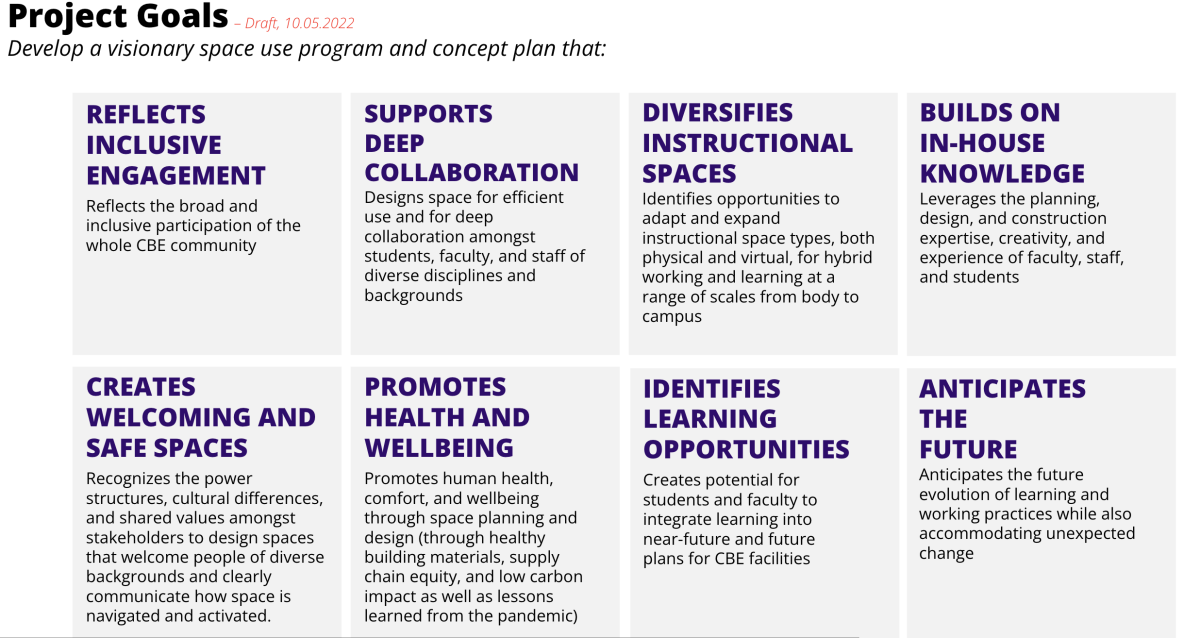After adopting our strategic framework nearly two years ago in 2021, the beginning of the year offers us a great opportunity to reflect and celebrate on what we have accomplished so far and where we plan to go. To learn more about our college’s efforts and outcomes towards these goals, please see the strategic plan implementation progress report.
Category: Strategic Planning
Engagement & Learning – Space Planning & Website Redesign
As you know, one of the strategic priorities for the college this year involves the space planning analysis work we are partnering on with KieranTimberlake (KT). We are also redesigning our website in partnership with Phinney Bishoff (PB) to ensure our physical and digital spaces reflect our values.
The input from you — students, staff and faculty — will be essential to the success of this work, and we are so fortunate to have such a well informed and knowledgeable community with which to engage!
Engagement Opportunities
WEDNESDAY OCT 26
Workshop 1 (Faculty/Staff)
8:30-10:00 Gould Court
Workshop 2 (Faculty/Staff)
2:00-5:00 Gould Court
Workshop 1 (Students)
10:30-11:30 Gould 110
Workshop 2 (Students)
11:30-1:20 Gould 110 (+Pizza)
THURSDAY OCT 27
Workshop 1 (Faculty/Staff)
8:00-9:30 Gould Court
Workshop 2 (Faculty/Staff)
12:00-3:00 Gould Court
Workshop 1 (Students)
10:00-11:30 Gould 114
Workshop 2 (Students)
5:00-8:00 Gould 110 (+Pizza)
Surveys will be sent out soon as another way to engage.
The CBE community is asking:
How can space support or generate opportunities for more collaboration among faculty, staff and students of diverse disciplines and backgrounds?
Is there a different way of organizing operations (program administration, advising, research) for more interdisciplinary work?
How can spaces communicate welcome to a diverse range of current and prospective students, faculty and staff?
Can we increase the diversity of instructional space types such as outdoor and semi-conditioned space?
With additional use of hybrid remote and in-person learning and interaction, do our space needs change?
How can our values hands-on fabrication and testing for teaching and scholarship be supported or reflected in our spaces?
CBE’s visionary programming analysis
Looking forward to 2022-2023, the second year of implementing the CBE strategic framework, one of our major projects will be to look at how our college’s virtual and physical spaces and places support our goals.
